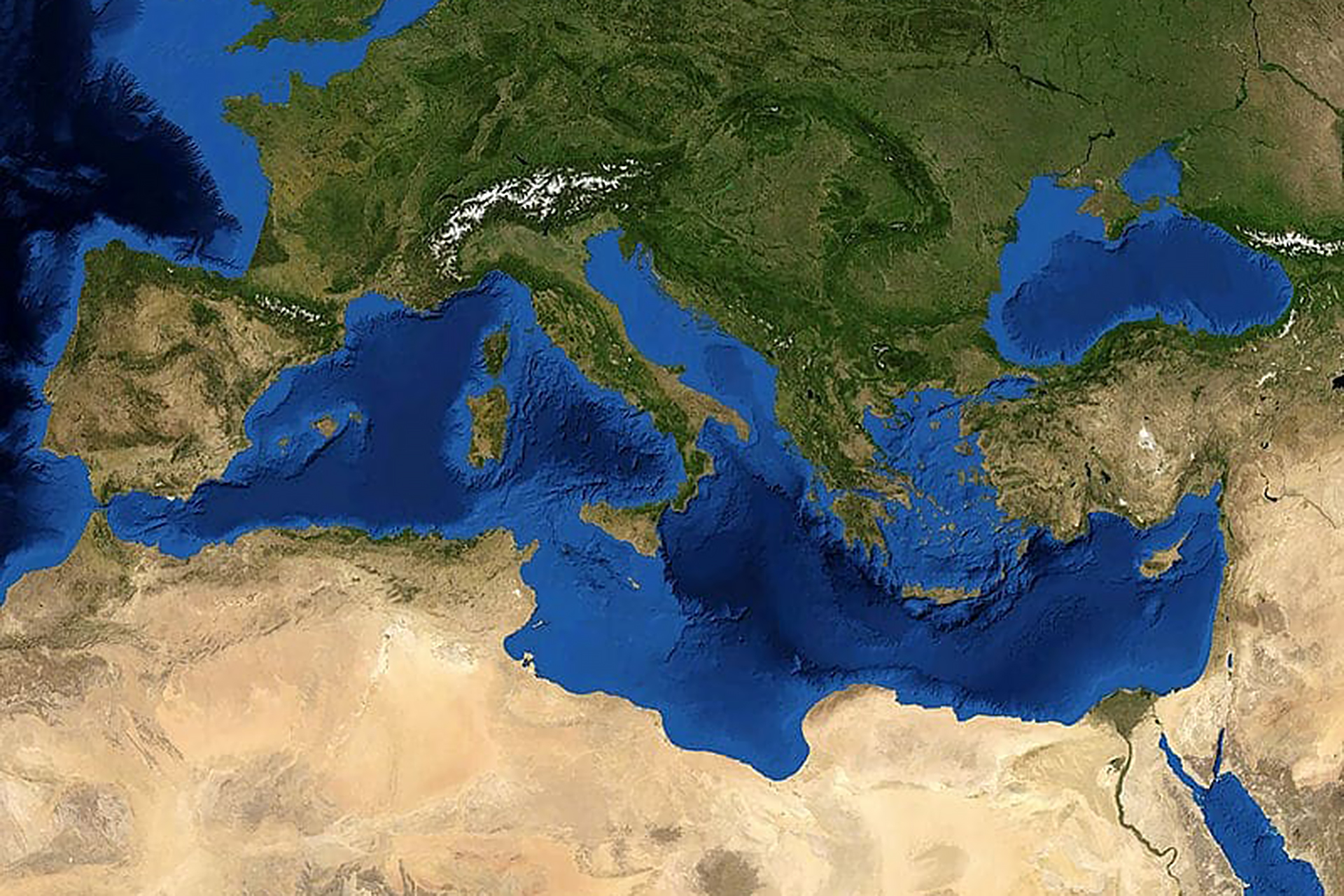A new study revealed that the chances of earthquakes in the western Mediterranean basin leading to destructive tsunamis are greater than what scientists previously expected.
The researchers, who for the first time determined the location of the boundary separating the African and Eurasian plates, west of the Mediterranean, confirmed that this new discovery increases the chances of this type of devastating disasters, which scientists expected that the Mediterranean will witness one of them during the next three decades.
geologically active areas
The Mediterranean Sea is one of the geologically active areas as a result of the collision of the African plate with the western part of the Eurasian plate.
This continuous collision, about 65 million years ago, led to the formation of the Alps and the shrinking of the Mediterranean, at a time when the African plate continues to move north by about 2.5 centimeters annually, submerged under the European plate, resulting in frequent seismic and volcanic activities.
Although the geological structure under the surface of the Mediterranean has been extensively studied, the data available so far for some areas were not sufficient to accurately know the boundaries between the two plates, and to understand the tectonic activity around them.
According to a press release published by the Institute of Marine Sciences in Barcelona (Institut de Ciències del Mar) on the 23rd of last month, the new scientific paper - which was recently published in the journal Nature Communications - identifies for the first time the complex geometry of the active fault system beneath The surface of the Alboran Basin, located in the western Mediterranean between the Moroccan, Algerian and Spanish coasts, and described how it has moved over the past 5 million years.
The accuracy of the data, on which the study was based, enabled a detailed characterization of the active fault system extending for more than 300 km, and the results showed that the fault systems in the region absorb most of the deformation caused by the collision of the Eurasian and African plates.
The researchers considered that the findings of the study are essential to reassess the risks of earthquakes and tsunamis affecting coastal areas in the western Mediterranean, especially since most previous studies on earthquake and tsunami risks did not take into account the importance of faults under the Alboran Sea due to lack of data.
The Mediterranean has witnessed many violent tsunami events, most of which were caused by strong earthquakes and landslides (Getty Images)
Tsunami waves in Mediterranean history
Historically, the Mediterranean has witnessed many violent tsunami events, most of which resulted from strong earthquakes and landslides that occurred in fault systems along the borders between the African and Eurasian plates.
It has been nearly a century since the last major tsunami in Europe, a wave up to 13 meters high caused by an earthquake in the depths of the Mediterranean off the coast of Sicily in 1908 that killed nearly 2,000 people.
But tsunami waves in the Mediterranean could be more devastating, according to an article by Matthew Blackitt, professor of physical geography and natural hazards at Coventry University, Britain, published on the Greek Reporter website.
A large volcanic eruption on the island of Santorini about 3,500 years ago led to a wave that completely destroyed the Minoan civilization, and the event may have led to the emergence of the myth of the disappearance of the civilization of Atlantis.
A series of earthquakes, some measuring 8.5 on the Richter scale, also struck the coast of Crete in 365 AD.
Some ancient cities in Greece, Italy and Egypt were devastated by tsunami waves, killing about 5,000 people in Alexandria alone.
In the western Mediterranean, not far from the Alboran Basin, which was covered by the last study, the last tsunami witnessed in the region dates back to 2003 when a strong earthquake struck the Boumerdes region on the Algerian coast, which led to the emergence of tsunami waves that reached a height of about two meters, and caused damage to the beaches of the Spanish Balearic Islands, which It is about 300 km north of the epicenter.
What about the future?
According to estimates published by the newspaper "The Guardian" before the results of the latest study were published, citing experts at UNESCO, the risk of a major tsunami within the next 30 years, during which waves one meter high, exceeds nearly 100%.
These waves are likely to hit large cities on the Mediterranean coast, such as Marseille, Alexandria and Istanbul.
Scientists expect sea level rise to increase the risk of a tsunami in the Mediterranean.
A scientific study showed that a rise of as much as 45 centimeters in sea level can double the risk of floods resulting from the inundation of sea water on land by about two and a half metres.
According to Blackett, the risks are also exacerbated by the fact that the Mediterranean is relatively small and enclosed, which means that any tsunami can spread throughout the basin, on which more than 130 million people live.
The warning times necessary to reduce casualties will also be short.
According to the Guardian, all threatened residential communities will be ready to respond by 2030 to deal with such events thanks to the early warning system that UNESCO has been focusing on since 2004.
Since the risks revealed by the new study were not taken into account, it is likely to prompt the supervisors of the warning system to reconsider the list of residential communities that are definitely threatened by tsunami waves.

